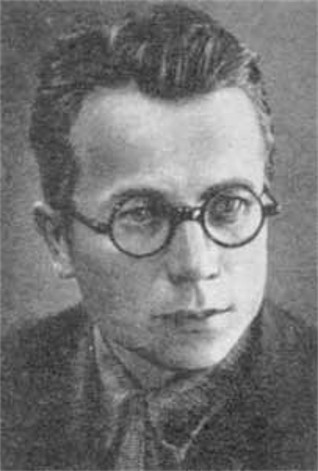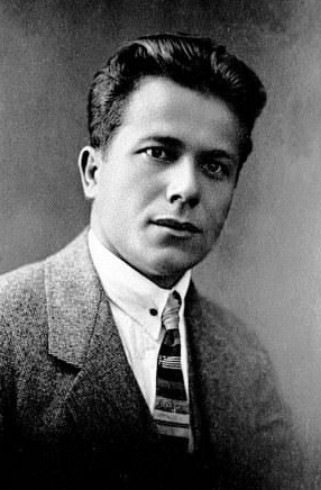Kosynka, Hryhorii
Kosynka, Hryhorii (pseud of Hryhorii Strilets), b 29 November 1899 in Shcherbanivka, Kyiv gubernia, d 17 December 1934 in Kyiv. (Photo: Hryhorii Kosynka.) Writer. From 1920 he lived in Kyiv and belonged to the writers' groups Hrono, Aspys, Lanka, and MARS. His first story, ‘Na buriaky’ (At Beet Harvest), appeared in 1919 in the paper Borot’ba (see Borotba). About 20 of his story collections appeared during his life, including Na zolotykh bohiv (Against the Golden Gods, 1922), Zakvitchanyi son (The Florid Dream, 1923), Za vorit’my (Behind the Gates, 1925), Maty (Mother, 1925), V zhytakh (In the Wheat Fields, 1926), Polityka (Politics, 1927), Vybrani opovidannia (Selected Stories, 1928 and 1929), and Tsyrkul’ (The Compass, 1930). Publication of the collection Sertse (The Heart, 1933) was prevented by the censors. Party critics accused Kosynka of propagating ‘kulak ideology,’ ‘counterrevolutionary tendencies,’ and ‘banditry’ in his stories. Publishing his stories was forbidden in the early 1930s, and he was forced to work as a scenarist. Arrested during the Stalinist terror, he and 36 others were tried on fabricated charges of terrorist activity by a military tribunal, and he and 27 others were summarily shot.
Kosynka was one of the more outstanding Soviet Ukrainian story writers of the 1920s and early 1930s. His stories captured the prevalent attitudes, relations, and political shifts among the Ukrainian peasantry during the 1917–21 period of revolutionary upheaval and war. Although Soviet literary criticism viewed him as merely an epigone of Mykhailo Kotsiubynsky, Stepan Vasylchenko, and Vasyl Stefanyk, this view is belied by an analysis of his unique style, in which examples of expressionism and experimentation, not unlike those of his contemporary Mykola Khvylovy, abound. Kosynka was posthumously rehabilitated after Joseph Stalin's death. Selected editions of his works appeared in New York in 1955, in Kyiv in 1962, 1967, 1972, and 1988, in Lviv in 1971, and (in Russian) in Moscow in 1930 and 1966. A book of memoirs about him was published in Kyiv in 1969.
Ivan Koshelivets
[This article originally appeared in the Encyclopedia of Ukraine, vol. 2 (1989).]


.jpg)
%20members%201920s.jpg)
.jpg)
